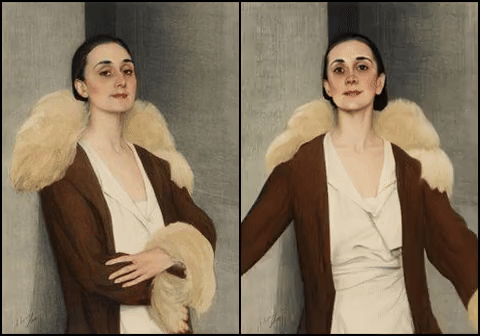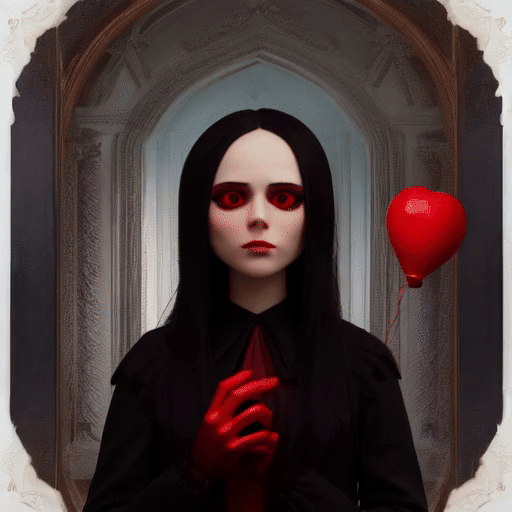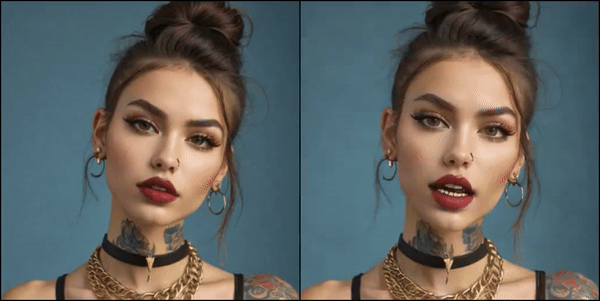dynami-crafter
Maintainer: camenduru

1.7K

| Property | Value |
|---|---|
| Run this model | Run on Replicate |
| API spec | View on Replicate |
| Github link | View on Github |
| Paper link | View on Arxiv |
Create account to get full access
Model overview
DynamiCrafter is a generative AI model that can animate open-domain still images based on a text prompt. It leverages pre-trained video diffusion priors to bring static images to life, allowing for the creation of engaging, dynamic visuals. This model is similar to other video generation models like VideoCrafter1, ScaleCrafter, and TaleCrafter, all of which are part of the "Crafter Family" of AI models developed by the same team.
Model inputs and outputs
DynamiCrafter takes in a text prompt and an optional input image, and generates a short, animated video in response. The model can produce videos at various resolutions, with the highest being 576x1024 pixels.
Inputs
- i2v_input_text: A text prompt describing the desired scene or animation.
- i2v_input_image: An optional input image that can provide visual guidance for the animation.
- i2v_seed: A random seed value to ensure reproducibility of the generated animation.
- i2v_steps: The number of sampling steps used to generate the animation.
- i2v_cfg_scale: The guidance scale, which controls the influence of the text prompt on the generated animation.
- i2v_motion: A parameter that controls the magnitude of motion in the generated animation.
- i2v_eta: A hyperparameter that controls the amount of noise added during the sampling process.
Outputs
- Output: A short, animated video file that brings the input text prompt or image to life.
Capabilities
DynamiCrafter can generate a wide variety of animated scenes, from dynamic natural landscapes to whimsical, fantastical scenarios. The model is particularly adept at capturing motion and creating a sense of liveliness in the generated animations. For example, the model can animate a "fireworks display" or a "robot walking through a destroyed city" with impressive results.
What can I use it for?
DynamiCrafter can be a powerful tool for a variety of applications, including storytelling, video creation, and visual effects. Its ability to transform static images into dynamic animations can be particularly useful for content creators, animators, and visual effects artists. The model's versatility also makes it a potential asset for businesses looking to create engaging, visually-striking marketing materials or product demonstrations.
Things to try
One interesting aspect of DynamiCrafter is its ability to generate frame-by-frame interpolation and looping videos. By providing the model with a starting and ending frame, it can generate a seamless animation that transitions between the two. This feature can be particularly useful for creating smooth, looping animations or for generating in-between frames for existing video content.
Another intriguing application of DynamiCrafter is its potential for interactive storytelling. By combining the model's animation capabilities with narrative elements, creators could potentially develop dynamic, responsive visual experiences that adapt to user input or evolve over time.
This summary was produced with help from an AI and may contain inaccuracies - check out the links to read the original source documents!
Related Models

dynami-crafter-576x1024

14
The dynami-crafter-576x1024 model, developed by camenduru, is a powerful AI tool that can create videos from a single input image. This model is part of a collection of similar models created by camenduru, including champ, animate-lcm, ml-mgie, tripo-sr, and instantmesh, all of which focus on image-to-video and 3D reconstruction tasks. Model inputs and outputs The dynami-crafter-576x1024 model takes an input image and generates a video output. The model allows users to customize various parameters, such as the ETA, random seed, sampling steps, motion magnitude, and CFG scale, to fine-tune the video output. Inputs i2v_input_image**: The input image to be used for generating the video i2v_input_text**: The input text to be used for generating the video i2v_seed**: The random seed to be used for generating the video i2v_steps**: The number of sampling steps to be used for generating the video i2v_motion**: The motion magnitude to be used for generating the video i2v_cfg_scale**: The CFG scale to be used for generating the video i2v_eta**: The ETA to be used for generating the video Outputs Output**: The generated video output Capabilities The dynami-crafter-576x1024 model can be used to create dynamic and visually appealing videos from a single input image. It can generate videos with a range of motion and visual styles, allowing users to explore different creative possibilities. The model's customizable parameters provide users with the flexibility to fine-tune the output according to their specific needs. What can I use it for? The dynami-crafter-576x1024 model can be used in a variety of applications, such as video content creation, social media marketing, and visual storytelling. Artists and creators can use this model to generate unique and eye-catching videos to showcase their work or promote their brand. Businesses can leverage the model to create engaging and dynamic video content for their marketing campaigns. Things to try Experiment with different input images and text prompts to see the diverse range of video outputs the dynami-crafter-576x1024 model can generate. Try varying the model's parameters, such as the random seed, sampling steps, and motion magnitude, to explore how these changes impact the final video. Additionally, compare the outputs of this model with those of other similar models created by camenduru to discover the nuances and unique capabilities of each.
Updated Invalid Date

champ

13
champ is a model developed by Fudan University that enables controllable and consistent human image animation with 3D parametric guidance. It allows users to animate human images by specifying 3D motion parameters, resulting in realistic and coherent animations. This model can be particularly useful for applications such as video game character animation, virtual avatar creation, and visual effects in films and videos. In contrast to similar models like InstantMesh, Arc2Face, and Real-ESRGAN, champ focuses specifically on human image animation with detailed 3D control. Model inputs and outputs champ takes two main inputs: a reference image and 3D motion guidance data. The reference image is used as the basis for the animated character, while the 3D motion guidance data specifies the desired movement and animation. The model then generates an output image that depicts the animated human figure based on the provided inputs. Inputs Ref Image Path**: The path to the reference image used as the basis for the animated character. Guidance Data**: The 3D motion data that specifies the desired movement and animation of the character. Outputs Output**: The generated image depicting the animated human figure based on the provided inputs. Capabilities champ can generate realistic and coherent human image animations by leveraging 3D parametric guidance. The model is capable of producing animations that are both controllable and consistent, allowing users to fine-tune the movement and expression of the animated character. This can be particularly useful for applications that require precise control over character animation, such as video games, virtual reality experiences, and visual effects. What can I use it for? The champ model can be used for a variety of applications that involve human image animation, such as: Video game character animation: Developers can use champ to create realistic and expressive character animations for their games. Virtual avatar creation: Businesses and individuals can use champ to generate animated avatars for use in virtual meetings, social media, and other online interactions. Visual effects in films and videos: Filmmakers and video content creators can leverage champ to enhance the realism and expressiveness of human characters in their productions. Things to try With champ, users can experiment with different 3D motion guidance data to create a wide range of human animations, from subtle gestures to complex dance routines. Additionally, users can explore the model's ability to maintain consistency in the animated character's appearance and movements, which can be particularly useful for creating seamless and natural-looking animations.
Updated Invalid Date

animate-lcm

1
The animate-lcm model, developed by camenduru, is a cartoon-style 3D animation model. It is capable of generating cartoon-like 3D animations from text prompts. The model draws inspiration from similar 3D animation models like LGM, Champ, and AnimateDiff-Lightning, which also aim to create 3D animated content from text. Model inputs and outputs The animate-lcm model takes in a text prompt as input and generates a 3D animation as output. The input prompt can describe the desired scene, character, and animation style, and the model will attempt to create a corresponding 3D animation. Inputs Prompt**: A text description of the desired scene, character, and animation style. Width**: The width of the output image in pixels. Height**: The height of the output image in pixels. Video Length**: The length of the output animation in number of frames. Guidance Scale**: A parameter controlling the strength of the text prompt in guiding the animation generation. Negative Prompt**: A text description of elements to exclude from the output. Num Inference Steps**: The number of steps to use when generating the animation. Outputs Output**: A 3D animated video file generated based on the input prompt. Capabilities The animate-lcm model is capable of generating cartoon-style 3D animations from text prompts. It can create a wide variety of animated scenes and characters, from cute animals to fantastical creatures. The animations have a distinctive hand-drawn, sketchy aesthetic. What can I use it for? The animate-lcm model can be used to quickly generate 3D animated content for a variety of applications, such as short films, social media posts, or video game assets. Its ability to generate animations from text prompts makes it a powerful tool for content creators, animators, and designers who want to quickly explore and iterate on different animation ideas. Things to try One interesting aspect of the animate-lcm model is its ability to capture the essence of a prompt in a unique, stylized way. For example, you could try generating animations of the same prompt with different variations, such as changing the guidance scale or negative prompt, to see how the model interprets the prompt differently. You could also experiment with prompts that combine multiple elements, like "a cute rabbit playing in a field of flowers," to see how the model combines these elements into a cohesive animation.
Updated Invalid Date

aniportrait-vid2vid

3
aniportrait-vid2vid is an AI model developed by camenduru that enables audio-driven synthesis of photorealistic portrait animation. It builds upon similar models like Champ, AnimateLCM Cartoon3D Model, and Arc2Face, which focus on controllable and consistent human image animation, creating cartoon-style 3D models, and generating human faces, respectively. Model inputs and outputs aniportrait-vid2vid takes in a reference image and a source video as inputs, and generates a series of output images that animate the portrait in the reference image to match the movements and expressions in the source video. Inputs Ref Image Path**: The input image used as the reference for the portrait animation Source Video Path**: The input video that provides the source of movement and expression for the animation Outputs Output**: An array of generated image URIs that depict the animated portrait Capabilities aniportrait-vid2vid can synthesize photorealistic portrait animations that are driven by audio input. This allows for the creation of expressive and dynamic portrait animations that can be used in a variety of applications, such as digital avatars, virtual communication, and multimedia productions. What can I use it for? The aniportrait-vid2vid model can be used to create engaging and lifelike portrait animations for a range of applications, such as virtual conferencing, interactive media, and digital marketing. By leveraging the model's ability to animate portraits in a photorealistic manner, users can generate compelling content that captures the nuances of human expression and movement. Things to try One interesting aspect of aniportrait-vid2vid is its potential for creating personalized and interactive content. By combining the model's portrait animation capabilities with other AI technologies, such as natural language processing or generative text, users could develop conversational digital assistants or interactive storytelling experiences that feature realistic, animated portraits.
Updated Invalid Date